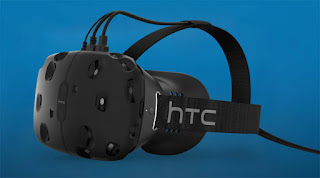By David Jones
The HTC Vive drew accolades from a hyped-up base of gamers and virtual reality enthusiasts when it launched earlier this month -- just days after the release of the Oculus Rift.
However, the Vive is proving to be an experience that is not for the faint of heart, the light of wallet, or the short of patience.
HTC earlier this year unveiled the Vive to an enthusiastic audience at the Mobile World Congress in Barcelona. Among its differentiating features is the Vive headset's ability to let users receive and respond to phone calls and text messages while immersed in the VR experience.
The Vive is a collaboration between HTC and Valve, developer of the SteamVR online gaming platform.
Clear the Room
One of the first things reviewers have pointed out about the Vive system is that it provides an experience that allows more than sitting or standing in place. The Vive requires a full empty room to deliver the complete experience, as the headset is packaged with room sensors and controllers that allow the user to roam freely in a fairly large environment to dictate the action.
Also required are a very high-end gaming computer and at least five available power outlets to plug in a link box, base stations, and an assortment of controllers.
The Vive setup involves a series of little annoyances that lead to an overall astounding experience that at times is like being on the holodeck of the Enterprise, according to reviewer Nathan Grayson of TechSpot.
The Vive requires a hefty investment of nearly US$800 up front, he pointed out.
Given the lack of content, it would make sense to wait a while before taking the plunge, Grayson suggested. A wider variety of games and maybe some hardware revisions could make the Vive experience more cost-efficient and user friendly.
The Vive is a world apart from other VR systems currently in the market, according to Gizmodo reviewer Michael Nunez.
However, the setup process is very time consuming, it offers a less-than-impressive opening catalog of game titles, and the headset itself is heavy and somewhat awkward, he noted.
That said, the Vive provides a virtual reality experience that is completely unlike anything available on the market, Nunez emphasized.
Open Your Wallet
The level of interest in virtual reality was intense at this year's Mobile World Congress and previously at CES, recalled Susan Schreiner, an analyst at C4 Trends.
Several challenges lie ahead before that excitement translates mainstream acceptance for these devices, though, she added.
"Foremost is price," Schreiner told TechNewsWorld. An additional concern is the relatively limited amount of actual experiences to go with the headset.
"While there seems to be a lot of chatter about content under development -- on day one content is limited," she said.
With the HTC Vive priced at $799 and the Oculus Rift at $599, it's not likely these units are going to fly off the shelves. Those price tags don't factor in the cost of the computing power required to deploy either device in the home, Schreiner pointed out.
An additional question is whether the solitary experience of virtual reality will last in a social media world that thrives on collaborative experiences, she noted.
On the flip side, there is a great deal of interest in the use of VR technology on the business side of the aisle -- for example, in real estate sales, interior design, architecture and medical training, Schreiner said.
The potential for the business side of virtual reality is exciting, said Tuong Nguyen, principal research analyst at Gartner.
"I think in terms of the market potential, it's pretty huge," he told TechNewsWorld. "We're talking about a new immersive technology medium."

No comments:
Post a Comment